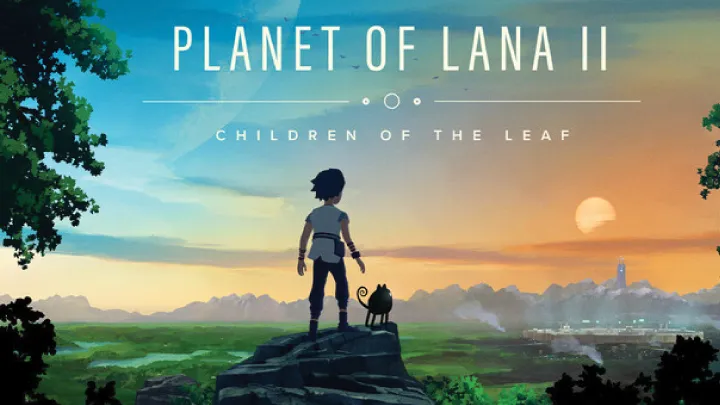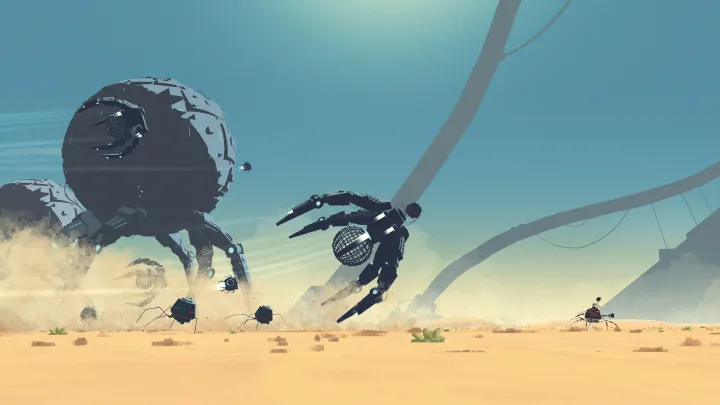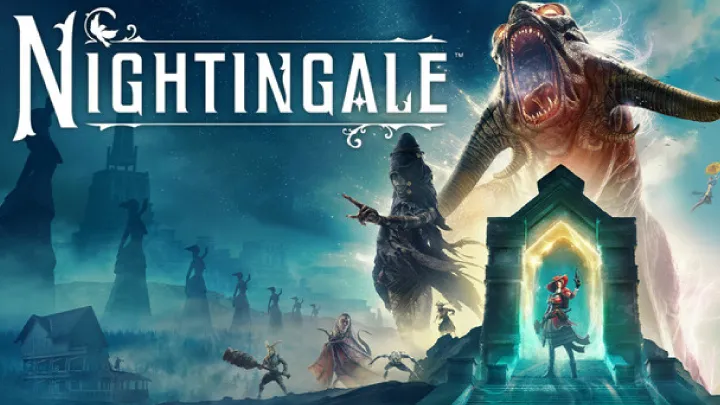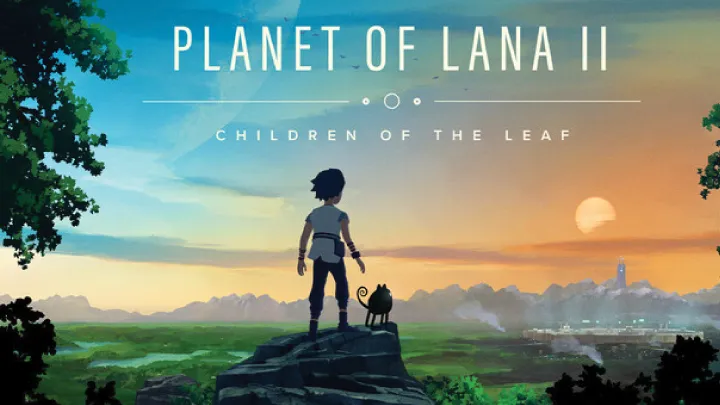
Planet of Lana, developed by Wishfully Studios, has captured the attention of gamers with its stunning visuals and poignant storytelling. The game offers players a richly crafted world filled with adventure and exploration, all while delivering heartfelt messages about companionship, resilience, and the fight against oppressive forces. A significant issue arising from the game is how effectively it utilizes its narrative and art style to evoke emotional responses, and how this impacts player engagement. This article will delve into the emotional core of Planet of Lana, examining how its storytelling, aesthetics, and gameplay mechanics intertwine to create a memorable experience.
Setting the Scene: The World of Planet of Lana
A Visual Masterpiece
From the moment you enter the world of Planet of Lana, it’s clear that the game is a visual feast.
- Art Direction
- The hand-painted art style blends vibrant colors with intricate details, reminiscent of classic animation. Each background feels alive, incorporating depth and perspective that invite exploration beyond mere backgrounds. The unique aesthetic sets the tone for an emotional journey, establishing an atmosphere that encourages players to become deeply invested in the unfolding story.
- Dynamic Environments
- The environments are varied, ranging from lush forests to stark, oppressive landscapes. Each area is visually rich, encouraging players to explore and interact with the world. Details within the environment reflect not just beauty but also the underlying themes of the narrative, serving as metaphors for the characters' emotional journeys.
The Allegorical Nature of the Setting
The world of Planet of Lana isn’t just beautiful; it serves as a structural device for the game’s narrative themes.
- Symbolism in Environment
- The contrast between vibrant areas filled with life and the darker, desolate settings mirrors the struggle against oppression. The players experience these transitions, contributing to an emotional understanding of Lana's quest and her motivations.
- Cultural References
- The game draws on varied cultural influences, enriching the experience with layers of meaning. These references invite players to draw parallels between their experiences and Lana's journey, creating a deeper appreciation for the narrative.
The Emotional Center: Lana’s Journey
Character Design and Development
At the heart of the game is Lana, a character designed to evoke empathy and connection.
- Supporting Characters
- Lana’s relationship with her friend, the creature Mui, is pivotal. The bond they share demonstrates the importance of companionship. Their relationship evolves throughout the game, symbolizing themes of trust, teamwork, and perseverance.
- Developing Emotion Through Gameplay
- As players guide Lana through various challenges, moments of vulnerability and strength highlight her character arc. Instances where she displays fear, determination, or sadness resonate deeply, making her journey relatable and impactful.
The Catalyst: A Journey of Discovery
Lana's quest is not merely about survival; it’s a profound exploration of identity and relationship.
- Inner Conflict
- Lana's journey forces her to confront her inner fears as she encounters the dangers of her world. This conflict drives both the mechanics and narrative of the game, engaging players as they navigate through challenges that mirror Lana’s evolving courage.
- Overcoming Obstacles
- Each challenge represents not only a physical hurdle but also an emotional one. Lana must learn to collaborate with Mui, overcoming her insecurities, which reflects a broader message about unity and strength found in friendships.
Narrative Structure: Weaving Emotion into Gameplay
The Use of Dialogue and Storytelling
The storytelling in Planet of Lana is conveyed through minimal dialogue, relying heavily on its visual narrative.
- Subtle Character Interactions
- Dialogue is sparse and serves to enhance the emotional stakes rather than define them. The absence of verbose narratives compels players to engage emotionally with the characters and their development through actions rather than words.
- Environmental Storytelling
- Players learn about the backstory and lore through environmental clues and visual cues. This method of storytelling enriches the narrative without cluttering it with excessive exposition, allowing the player to engage actively in piecing together the story.
The Journey Through Puzzles and Gameplay
Puzzle design in Planet of Lana is intricately connected to the narrative, creating synergies that enhance emotional depth.
- Puzzle Mechanics as Narrative Devices
- Each puzzle corresponds to Lana's emotional journey, requiring players to think creatively and work collaboratively with Mui. The mechanics demand close attention to the environment, reinforcing the interconnectedness of gameplay and narrative.
- Introspection Through Challenges
- Many puzzles require players to reflect on their relationships and the environments they traverse. Success in overcoming these hurdles often yields emotional rewards, encouraging players to feel satisfied not just for solving challenges but for the character development they witness.
Themes of Oppression and Resistance
The Environmental Conflict
The overarching conflict in Planet of Lana revolves around the oppression faced by its characters.
- Representations of Oppression
- The enemies and obstacles presented in the game symbolize forces that seek to suppress beauty and creativity. These conflicts serve as metaphors for real-world struggles, inviting players to engage with concepts of resistance and perseverance meaningfully.
- Confronting the Threat
- As Lana faces these oppressive forces, she embodies the spirit of resistance. Each confrontation requires bravery, mirroring the challenges individuals may face in their lives when confronted with oppressive circumstances.
Emotional Responses to Conflict
The emotional stakes in Planet of Lana emphasize the impact of these themes on the player's journey.
- Building Resilience
- Players’ emotional responses to Lana’s challenges aid in creating a connection to the character's journey and thematic relevance. Overcoming obstacles becomes a powerful symbol of resilience, promoting messages of hope.
- Empowerment Through Struggle
- The game encourages players to view struggles not as merely obstacles but as opportunities for growth and empowerment. This perspective is especially resonant when faced with oppressive challenges within and outside the game world.
The Role of Companionship
Bonds that Shape the Journey
The relationship between Lana and Mui is central to the narrative's emotional core.
- Cooperation and Trust
- Throughout the game, players witness how the duo’s bond develops through cooperative gameplay, reflecting the significance of trust and teamwork. Their relationship serves as a foundation for encouraging problem-solving, showcasing their reliance on each other.
- Emotional Connection
- Moments of vulnerability between Lana and Mui elicit emotional responses, enhancing the gameplay experience. The deepening bond invites players to reflect on their own relationships, reinforcing universal themes.
The Power of Supporting Characters
Other characters encountered further enrich the narrative, highlighting various themes of trust and companionship.
- Interactions with NPCs
- The few inhabitants encountered along the way often mirror Lana's struggles and aspirations. These brief interactions add emotional layers, as players recognize that isolation can exist even in populated areas.
- Shared Resolve
- Characters emphasize the importance of shared experiences and goals, reminding players that even amidst isolation, connections can offer strength.
Resonances of Identity and Self-discovery
Exploring Personal Growth
As players journey through the game, themes of identity and self-discovery become increasingly prominent.
- Learning Through Conflict
- Encounters with challenges prompt Lana to confront her identity, unleashing moments of introspection that compel players to reflect on their own journeys. Each success or failure contributes to her personal growth, allowing players to witness transformative progression.
- Finding Purpose
- As Lana discovers her place in the world, players experience the emotional weight of her revelations. Through challenges that encourage self-exploration, the narrative deepens, promoting connections to identity and purpose.
Reflecting Real-Life Challenges
The narrative's exploration of self-discovery resonates with real-world issues, inviting players to draw parallels to their own experiences.
- The Journey of Acceptance
- Characters in the game often grapple with self-acceptance and finding their voice. This theme encourages players to confront their own insecurities, fostering a relatable and impactful experience.
- Empowerment Through Discovery
- By emphasizing the journey towards self-discovery, the game instills a sense of empowerment, inspiring players to embrace their own paths and find strength in vulnerability.
Conclusion: The Lasting Impact of Dredge on Emotional Engagement
In conclusion, Planet of Lana skillfully weaves together themes of isolation, companionship, and self-discovery into a beautifully crafted narrative that resonates deeply with players. Through its engaging gameplay, stunning visuals, and rich storytelling, the game highlights the universal struggles of loneliness and the pursuit of connection.
By exploring the intricacies of character development, environmental storytelling, and emotional depth, Planet of Lana stands as a testament to the power of narrative in gaming. As players traverse this enchanting world alongside Lana and Mui, they are invited to engage in an emotional journey that transcends mere gameplay, leaving a lasting impact on their hearts and minds.

















